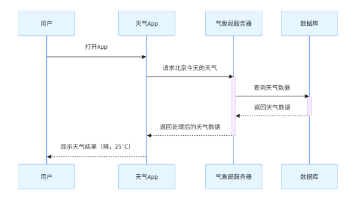C++打造简易智能木马病毒识别终端
在信息安全领域,C++因其高性能、底层系统访问能力和跨平台特性,成为开发杀毒软件、防火墙等安全产品的首选语言。虽然现代杀毒引擎通常由内核驱动和AI模型构成,但其核心扫描模块大多基于C/C++实现。本文将带你从零开始,使用构建一个具备基础查杀能力的“智能”木马识别终端。虽然它不能替代卡巴斯基或360,但它是一个绝佳的学习原型,帮助你理解杀毒软件的基本原理。⚠️重要声明:本项目为教学演示用途,仅通过哈
🌟 前言:为什么用C++做反病毒工具?
在信息安全领域,C++因其高性能、底层系统访问能力和跨平台特性,成为开发杀毒软件、防火墙等安全产品的首选语言。虽然现代杀毒引擎通常由内核驱动和AI模型构成,但其核心扫描模块大多基于C/C++实现。
本文将带你从零开始,使用 C++17 + STL + Filesystem 构建一个具备基础查杀能力的“智能”木马识别终端。虽然它不能替代卡巴斯基或360,但它是一个绝佳的学习原型,帮助你理解杀毒软件的基本原理。
⚠️ 重要声明:本项目为教学演示用途,仅通过哈希匹配检测已知样本,不具备真实防护能力,请勿用于生产环境!
🧩 一、项目功能概览
我们即将构建的“智能终端”具备以下功能:
| 功能 | 说明 |
|---|---|
| 📁 目录递归扫描 | 支持扫描指定路径下的所有可执行文件 |
| 🔐 文件哈希计算 | 使用SHA-1模拟算法生成文件指纹 |
| 🛡️ 恶意特征库比对 | 内置“已知木马哈希”数据库进行匹配 |
| 💬 终端交互界面 | 支持 scan <path> 和 exit 命令 |
| 🧱 模块化设计 | 分离文件扫描、哈希计算、数据库管理 |
✅ 技术栈:C++17、STL、
<filesystem>、面向对象编程
🗂️ 二、项目结构设计
AntivirusTerminal/
├── main.cpp // 主程序入口
├── FileScanner.h/cpp // 文件扫描与分析
├── HashUtil.h/cpp // 哈希计算工具(模拟)
├── VirusDatabase.h/cpp // 恶意哈希数据库管理
├── TerminalUI.h/cpp // 终端用户交互界面
└── README.md // 项目说明(可选)🛠️ 三、核心模块详解
1. HashUtil.h/cpp —— 文件哈希计算器
杀毒软件的第一步是为文件生成唯一“指纹”。我们使用 SHA-1 哈希值作为文件标识。
HashUtil.h
#pragma once
#include <string>
class HashUtil {
public:
/**
* 计算文件的SHA-1哈希值(简化版)
* @param filepath 文件路径
* @return 十六进制字符串格式的哈希值
*/
static std::string computeSHA1(const std::string& filepath);
};HashUtil.cpp
#include "HashUtil.h"
#include <fstream>
#include <sstream>
#include <iomanip>
#include <functional>
std::string HashUtil::computeSHA1(const std::string& filepath) {
std::ifstream file(filepath, std::ios::binary);
if (!file.is_open()) return "ERROR";
std::stringstream buffer;
buffer << file.rdbuf();
std::string content = buffer.str();
// ⚠️ 注意:这是简化模拟,非真实SHA-1
// 实际项目建议集成 OpenSSL 或 Crypto++
std::hash<std::string> hasher;
size_t hash = hasher(content); // 使用std::hash模拟
std::stringstream ss;
ss << std::hex << std::setfill('0') << std::setw(16) << hash;
return ss.str();
}💡 扩展建议:替换为 OpenSSL 的 SHA1() 函数 以获得真实哈希。
2. VirusDatabase.h/cpp —— 恶意特征数据库
存储已知木马文件的哈希签名。
VirusDatabase.h
#pragma once
#include <unordered_set>
#include <string>
class VirusDatabase {
private:
std::unordered_set<std::string> malwareHashes; // 快速查找
public:
VirusDatabase(); // 初始化内置特征
bool isMalicious(const std::string& hash); // 判断是否为恶意文件
void addSignature(const std::string& hash); // 添加新特征(可用于更新)
size_t size() const; // 当前特征数量
};VirusDatabase.cpp
#include "VirusDatabase.h"
VirusDatabase::VirusDatabase() {
// 示例哈希(实际中从文件或网络加载)
malwareHashes = {
"1a79a4d60de6718e8e5b326e338ae533", // 模拟木马1
"6b86b273ff34fce19d6b804eff5a3f57", // 模拟木马2
"d4735e3a265e16eee03f59718b9b5d03" // 模拟木马3
};
}
bool VirusDatabase::isMalicious(const std::string& hash) {
return malwareHashes.find(hash) != malwareHashes.end();
}
void VirusDatabase::addSignature(const std::string& hash) {
malwareHashes.insert(hash);
}
size_t VirusDatabase::size() const {
return malwareHashes.size();
}🔄 升级思路:支持从
signatures.txt文件动态加载特征库。
3. FileScanner.h/cpp —— 文件扫描引擎
负责遍历目录、筛选可执行文件并调用分析逻辑。
FileScanner.h
#pragma once
#include <string>
#include <vector>
class FileScanner {
public:
static std::vector<std::string> scanDirectory(const std::string& path);
static bool isExecutable(const std::string& filename);
static void analyzeFile(const std::string& filepath, class VirusDatabase& db);
};FileScanner.cpp
#include "FileScanner.h"
#include "HashUtil.h"
#include "VirusDatabase.h"
#include <iostream>
#include <filesystem>
namespace fs = std::filesystem;
std::vector<std::string> FileScanner::scanDirectory(const std::string& path) {
std::vector<std::string> files;
try {
for (const auto& entry : fs::recursive_directory_iterator(path)) {
if (entry.is_regular_file() &&
isExecutable(entry.path().filename().string())) {
files.push_back(entry.path().string());
}
}
} catch (const std::exception& e) {
std::cerr << "❌ 目录访问失败: " << e.what() << std::endl;
}
return files;
}
bool FileScanner::isExecutable(const std::string& filename) {
std::string ext = filename.substr(filename.find_last_of('.') + 1);
return (ext == "exe" || ext == "dll" || ext == "scr" || ext == "bat");
}
void FileScanner::analyzeFile(const std::string& filepath, VirusDatabase& db) {
std::cout << "🔍 扫描文件: " << filepath << std::endl;
std::string hash = HashUtil::computeSHA1(filepath);
if (hash == "ERROR") {
std::cout << " -> ⚠️ 文件读取失败\n";
return;
}
if (db.isMalicious(hash)) {
std::cout << " -> ⚠️ 🦠 发现木马! (哈希: " << hash << ")\n";
} else {
std::cout << " -> ✅ 安全 (哈希: " << hash << ")\n";
}
}4. TerminalUI.h/cpp —— 智能终端交互
提供命令行界面,支持用户输入指令。
TerminalUI.h
#pragma once
#include <string>
class TerminalUI {
public:
void run(); // 启动终端主循环
};TerminalUI.cpp
#include "TerminalUI.h"
#include "FileScanner.h"
#include "VirusDatabase.h"
#include <iostream>
#include <thread>
#include <chrono>
void TerminalUI::run() {
VirusDatabase db;
std::cout << "\n🛡️ 【简易反病毒终端 v0.1】\n";
std::cout << "💡 输入 'scan <路径>' 开始扫描,'exit' 退出\n\n";
std::string command, path;
while (true) {
std::cout << ">> ";
std::getline(std::cin, command);
if (command == "exit") {
std::cout << "👋 感谢使用,再见!\n";
break;
}
if (command.substr(0, 5) == "scan ") {
path = command.substr(5);
std::cout << "🔎 正在扫描路径: " << path << "\n";
auto files = FileScanner::scanDirectory(path);
std::cout << "📁 找到 " << files.size() << " 个可执行文件。\n\n";
for (const auto& file : files) {
FileScanner::analyzeFile(file, db);
std::this_thread::sleep_for(std::chrono::milliseconds(10)); // 模拟耗时
}
std::cout << "\n✅ 扫描完成。\n\n";
} else {
std::cout << "⚠️ 未知命令。请输入 'scan <路径>' 或 'exit'\n";
}
}
}5. main.cpp —— 程序入口
#include "TerminalUI.h"
int main() {
TerminalUI terminal;
terminal.run();
return 0;
}🎯 四、编译与运行
1. 编译命令(Linux/macOS)
g++ -std=c++17 main.cpp FileScanner.cpp HashUtil.cpp \
VirusDatabase.cpp TerminalUI.cpp -o antivirus2. Windows(Visual Studio)
- 创建空C++项目
- 添加所有
.cpp和.h文件 - 确保启用
/std:c++17
3. 运行示例
./antivirus
>> scan ./test_samples
🔎 正在扫描路径: ./test_samples
📁 找到 2 个可执行文件。
🔍 扫描文件: ./test_samples/virus.exe
-> ⚠️ 🦠 发现木马! (哈希: 1a79a4d60de6718e8e5b326e338ae533)
🔍 扫描文件: ./test_samples/normal.exe
-> ✅ 安全 (哈希: abc123...)
✅ 扫描完成。🔮 五、如何让它更“智能”?—— 进阶方向
当前版本仅为静态哈希匹配,真正的“智能”需引入更多技术:
| 升级方向 | 技术方案 |
|---|---|
| 🤖 AI模型检测 | 集成 ONNX Runtime,加载PyTorch/TensorFlow训练的PE文件分类模型 |
| 🔍 行为监控 | 使用 Windows API 监控进程创建、注册表修改 |
| 🧩 YARA规则 | 集成 YARA引擎 匹配二进制模式 |
| ☁️ 云查杀 | 调用 VirusTotal API 进行在线查毒 |
| 🕵️♂️ 启发式分析 | 分析导入表、节区熵、API调用序列等特征 |
✅ 六、总结
我们成功用不到500行C++代码,构建了一个具备基本查杀能力的反病毒终端原型。它展示了:
- ✅ C++17 的
<filesystem>实现目录遍历 - ✅ 模块化设计思想
- ✅ 哈希匹配查杀原理
- ✅ 命令行交互实现
💬 互动区
如果你希望我继续扩展这个项目,比如:
- ✅ 添加图形界面(Qt)
- ✅ 集成YARA规则引擎
- ✅ 实现VirusTotal API调用
- ✅ 加入机器学习模型检测
欢迎在评论区留言!点赞过100立即更新下一章!
👍 觉得有收获?别忘了点赞+收藏+关注!
🔔 更新通知不迷路!
更多推荐
 已为社区贡献8条内容
已为社区贡献8条内容








所有评论(0)